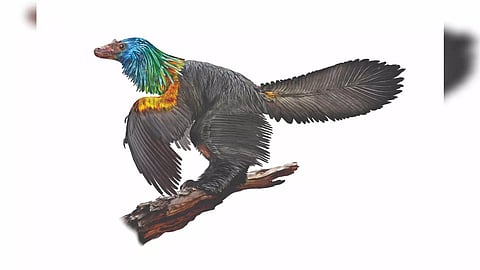

In 1993, “Jurassic Park” helped inspire 9-year-old Stephen Brusatte to become a paleontologist. So Dr. Brusatte was thrilled to advise the producers of last year’s “Jurassic World: Dominion” on what scientists had learned about dinosaurs since he was a child. He was especially happy to see one of the most important discoveries make it to the screen: dinosaurs that sported feathers. But judging from the emails he has been receiving, some moviegoers did not share his excitement. “A lot of people thought it was made up,” said Dr. Brusatte, a professor at the University of Edinburgh. “They thought it was filmmakers trying to do something crazy.”
Far from crazy, feathered dinosaurs have become a well-established fact, thanks largely to a trove of remarkable fossils that have been unearthed in northeast China since the mid-1990s. Now Dr. Brusatte and other paleontologists are trying to determine exactly how feathered dinosaurs achieved powered flight and became the birds that fly overhead today — an evolutionary mystery that stretches more than 150 million years. The first big clue to the origin of birds came in 1861, when quarry workers in Solnhofen, Germany, found a spectacular fossil of a 145-million-year-old bird that came to be called Archaeopteryx. It had feathered wings like living birds, but also had traits found in reptiles, such as teeth, claws and a long bony tail.
Charles Darwin, who had published “On the Origin of Species” two years earlier, was delighted. Archaeopteryx looked like what Darwin would have predicted if birds had evolved from reptilian ancestors. “It is a grand case for me,” he told a friend. Grand as it might have been, Archaeopteryx did not close the case. It did not, for example, reveal which group of reptiles gave rise to birds, nor did it track how those ancestors evolved wings from nothing. In the 1970s, John Ostrom, a paleontologist at Yale University, identified similarities in the skeletons of birds and ground-running dinosaurs called theropods, a group that includes the Velociraptor and the Tyrannosaurus rex. But no theropod fossils preserved wings, let alone feathers. Without more evidence, Dr. Ostrom and other paleontologists argued fiercely about the origin of birds for decades.
In 1996, Pei-ji Chen, a paleontologist from the Nanjing Institute of Geology and Paleontology in China, came to a paleontology meeting at the American Museum of Natural History in New York, where he handed a packet of photographs to Dr. Ostrom. The pictures showed a fossil of a dinosaur with a fringe of what looked like rudimentary feathers. Dr. Ostrom was so astonished he had to sit down.
The 125-million-year-old fossil, now known as Sinosauropteryx prima, came from the Liaoning Province of northeastern China. It was exquisitely preserved in a Pompeii-like blanket of ash. Since then, a steady stream of feathered dinosaur fossils has emerged from the region.
“There are many thousands of feathered dinosaurs now,” Dr. Brusatte said.
As more fossils emerged, paleontologists realized that theropods were not the only dinosaurs with feathers. Other species had simple versions, which looked more like wires than the complex network of interlocking filaments found in bird feathers today.